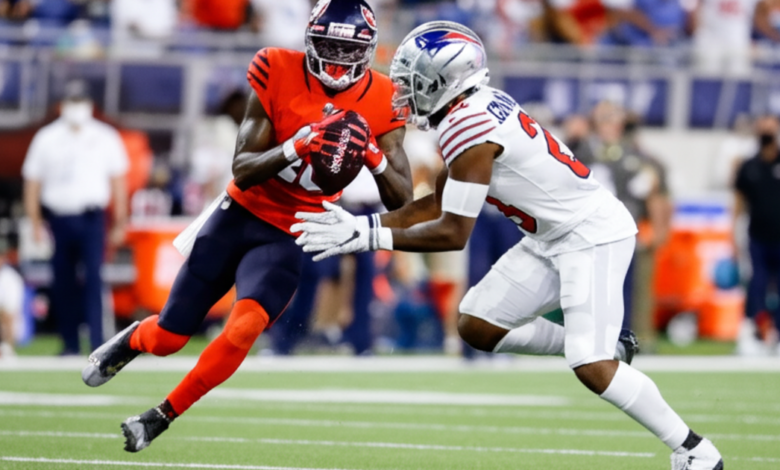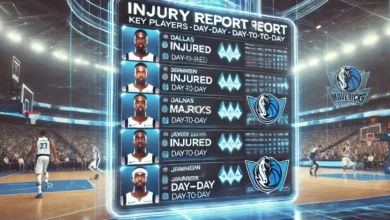Running Backs Explained: Roles & Key Traits
Running Backs Explained: Roles & Key Traits

Article Summary
Running backs are vital players in American football, responsible for carrying the ball, catching passes, and blocking. They line up behind the quarterback and combine speed, power, and agility to gain yards and score touchdowns. There are different types of running players, including speed backs, power backs, and third-down backs, each with unique roles.
Successful running players must be quick, tough, and smart, able to evade defenders and protect the ball. Blocking and receiving skills are also essential. This article explores everything about running players, their skills, types, and importance in football, providing a comprehensive guide for fans and players alike.
What Are Running Backs in Football?
Running players (RBs) are offensive players in American football who primarily carry the ball during running plays. Positioned behind the quarterback in the backfield, their job is to rush the ball, catch passes, and block defenders. They are often the players who handle the ball most frequently during a game and are critical to controlling the offense’s pace and success.
Key Roles of Running Backs
-
Rushing the Ball: Running players receive handoffs from the quarterback and aim to advance the ball by running through or around defenders.
-
Receiving: RBs often catch short passes, serving as reliable targets in passing plays.
-
Blocking: They protect the quarterback by blocking blitzing defenders and creating running lanes for teammates.
-
Special Situations: Some running players specialize in goal-line or short-yardage plays where power and toughness are crucial.
Essential Skills for Running Backs
Speed and Quickness
Speed allows running players to outrun defenders, while quickness helps them change direction rapidly to evade tackles. These traits are crucial for gaining yards and making big plays.
Elusiveness
Elusiveness is the ability to make defenders miss tackles through agility and sharp cuts. This skill separates average backs from stars who can extend plays and gain extra yards.
Power and Toughness
Running players must absorb hits and break tackles. Power backs use strength to push through defenders, especially in short-yardage and goal-line situations. Mental toughness is equally important to endure physical punishment throughout the game.
Vision and Awareness
A great running back reads blocks and defensive formations to find open lanes. Peripheral vision helps them anticipate defenders and adjust their runs accordingly.
Receiving and Blocking
Modern running players are versatile, catching passes out of the backfield and blocking blitzers to protect the quarterback. This dual-threat ability makes them valuable in today’s pass-heavy offenses.
Types of Running Backs
Speed Running Back
Smaller and agile, speed backs excel at running outside the tackles and exploiting open space. They rely on quickness and elusiveness rather than brute strength.
Power Running Back
These backs are bigger and stronger, specializing in running between the tackles and gaining tough yards. They are often used in short-yardage and goal-line situations.
Third-Down Back
Specialists in catching passes and pass blocking, third-down backs come in on passing downs to provide a reliable receiving option and protect the quarterback.
Running Back vs Fullback
While both line up in the backfield, running players primarily carry the ball and catch passes. Fullbacks are typically bigger and focus on blocking to open running lanes and protect the quarterback. Fullbacks are less common in modern offenses but remain important in power-running schemes.
How Running Backs Train for Success
Speed Training
Running players improve their acceleration and top-end speed through sprint drills and agility exercises. Speed helps them outrun defenders and make explosive plays.
Agility and Elusiveness Drills
Cone drills, ladder drills, and reaction exercises train running players to change direction quickly and evade tackles.
Strength and Conditioning
Weight training builds the power needed to break tackles and absorb hits. Endurance training helps backs maintain performance throughout the game.
Mental Toughness
Running players develop resilience to handle the physical and mental demands of the position, including recovering quickly from hits and staying focused.
The Importance of Blocking for Running Backs
Blocking is often overlooked but essential. Running players must pick up blitzing linebackers and safeties to protect the quarterback. Effective blocking can extend plays and prevent sacks, making running players valuable in both running and passing games.
Famous Running Backs and Their Styles
-
Barry Sanders: Known for his elusiveness and agility, Sanders was a master at making defenders miss.
-
Earl Campbell: A power back who dominated with brute strength and toughness.
-
Christian McCaffrey: A modern all-purpose back excelling in both rushing and receiving.
-
Emmitt Smith: The NFL’s all-time leading rusher, combining power and vision.
Running Backs in Modern Football Strategy
The role of running players has evolved with more pass-oriented offenses. Versatile backs who can run, catch, and block are highly valued. Teams often use running players in multiple roles to keep defenses guessing and maintain offensive balance.
How to Play Running Back: Tips for Aspiring Players
-
Master the Basics: Learn proper stance, ball handling, and running techniques.
-
Improve Speed and Agility: Focus on drills that increase quickness and elusiveness.
-
Develop Strength: Build leg drive and upper body strength to break tackles.
-
Practice Blocking: Understand blocking assignments and techniques to protect the quarterback.
-
Study the Game: Learn to read defenses and anticipate openings.
-
Stay Mentally Tough: Prepare to face physical challenges and maintain focus.
Conclusion
Running players are a cornerstone of football offenses, combining speed, power, agility, and intelligence to advance the ball and score. Their roles extend beyond rushing to include receiving and blocking, making versatility essential. Different types of running players—speed, power, and third-down specialists—serve unique purposes on the field.
Training for this position demands a blend of physical skills and mental toughness. Understanding the running back’s role and skills provides deeper appreciation for their impact on the game. Whether you’re a fan or player, mastering the art of running players enriches your football knowledge and enjoyment.
Frequently Asked Questions (FAQs)
What is the primary role of a running back?
The primary role of a running back is to carry the ball on running plays, gain positive yardage, and help the offense control the game. They also catch passes and block defenders.
How do running backs differ from fullbacks?
Running player mainly focus on rushing and receiving, while fullbacks primarily block and create running lanes. Fullbacks are usually bigger and used in power-running schemes.
What skills make a great running back?
Key skills include speed, agility, elusiveness, power, vision, receiving ability, blocking, and mental toughness.
Why are running backs important in modern football?
Running player provide offensive balance by running, catching, and blocking, helping teams adapt to pass-heavy strategies and keep defenses off balance.
What types of running backs exist?
There are speed backs (quick and agile), power backs (strong and tough), and third-down backs (pass-catching and blocking specialists.
How can aspiring players improve as running backs?
They should focus on speed and agility drills, strength training, blocking techniques, ball security, and studying game strategies.




